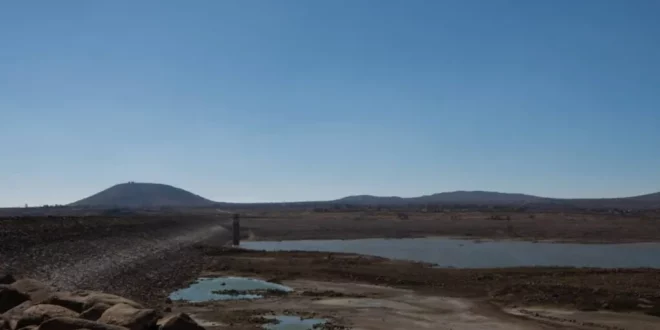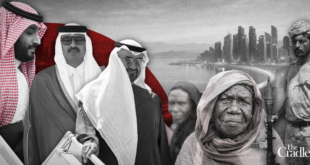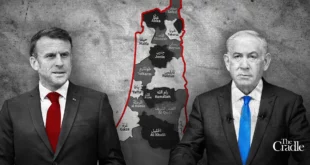Sakhr Mahmoud al-Nader, 53, treads through his backyard, his black farming boots glinting in the southern Syrian sun. Creases appear near his eyes as he speaks of his family and work, both rooted deeply in his hometown of al-Rafid, a village in the country’s Quneitra Governorate. “In the war of 1967, my family was displaced from our home,” he says. “We returned in 1973 … and began to work in agriculture.”
Al-Nader is a farmer from the border town, located less than a kilometer from the Alpha Line, established as part of a disengagement agreement between Israel and Syria the year after the nearly three-week war in October 1973. His home and farmlands are located within what the two parties agreed would be a “demilitarized buffer zone.”
After rebels toppled former Syrian ruler Bashar al-Assad’s regime in December 2024, Israel declared the agreement “void until order was restored” and pushed into Syrian territory, establishing multiple new outposts within the buffer zone.
During the 1967 Middle East war, Israel occupied most of the Golan Heights, an area southwest of Damascus with a predominantly Druze population. Many residents from the still-occupied territory were displaced into the bordering Quneitra. No countries other than the United States recognize the Golan Heights as Israeli territory.
According to estimates, Israel depends on the Golan Heights for about one-third of its water supply. Its rich water resources and strategic geopolitical position make it a crucial location for Israeli interests in the region. Their seizure of water resources in Quneitra and Daraa, and the construction of military outposts, may indicate Israel’s intention to expand its occupation of southern Syria on a long-term basis.
Today, al-Nader’s agricultural work, like that of many farmers in the region, has been hit hard by frequent Israeli incursions into southern Syria. Meanwhile, Israeli forces have also seized control of the Mantara dam, a key source of water for the already climate change-stricken governorate and those surrounding it. “There is barely any surface water in the region, except a couple of simple springs in al-Rafid,” al-Nader says.
According to Mwaffak Chikhali, a Syrian national resources management expert, more than half of the arable land in Quneitra depends on irrigation from its six dams. Today, the Kodna dam has a smattering of pools — far from enough to meet agricultural needs — and the al-Hajjah dam is bone dry. “Mantara is the dam that accumulates water and stores water for drinking and irrigation, and at the same time, feeds other dams in Quneitra and Daraa when necessary,” he explains.
The Mantara dam’s water supply has reportedly reached dangerously low levels. Israeli forces have ostensibly withdrawn from the dam, but not before they erected earthen barriers blocking the path that connects the main road to the dam body.
The dam body remains difficult to access, according to Bassem al-Shamali, the head of water resources in Quneitra. He mentions that despite Israeli control of the dam, he was able to open the dam’s floodgates multiple times, often after going face-to-face with the officers. “It was alright for me, but if a civilian went up to the dam, they could be sniped,” he admits, recounting that Israeli forces have put up warning signs and blocked civilian access to the area.
“It was alright for me, but if a civilian went up to the dam, they could be sniped.” – Bassem al-ShamaliDifficulties in accessing the dam and, largely, the surface water in the Yarmouk basin add to the operational troubles that farmers like al-Nader are facing. They’re often barred from accessing their own grazing lands or do so at great personal risk. His neighbor, also an agricultural worker, was shot by Israeli forces while tending to his fields. “The people here are poor; they need to graze their cattle,” he says. “If they’re supposed to stay two kilometers away from the boundary, it becomes a problem for them, considering that most people in the region are farmers and livestock breeders.”
Meanwhile, he adds, Israeli soldiers have routinely conducted patrols in his village and the surrounding area. Rights groups say they have seized or demolished homes, carried out raids, displaced civilians, arbitrarily detained people, and, in some cases, sent Syrian detainees to Israel.
Ali Abu Ahmed, a teacher from the Western Samadaniyeh village who works in farming and livestock breeding, says the situation has made life harder for agricultural workers. “We’re not able to work on our land like we used to,” he says, holding tools he uses to prepare the soil. “We do work, but when we see the Israeli patrols coming near us or the land, it’s a problem. Any movement we make, they could open fire on us, and we’re scared of this.”
Chikhali says it’s hard to estimate exactly how much Israel’s occupation is responsible for the water shortage in the region, but that their desire for control of the region’s water sources — “which it makes no effort to hide” — is part of a broader strategy to exert influence on southern Syria. He adds that Israel digging deep wells could be a factor in the changing “hydrological gradient of water resources.”
Between 35% and 45% of Israel’s water resources come from the broader area where the Syrian, Lebanese, and Israeli borders meet, according to Chikhali, a fact he says explains the “ferocity” behind Israeli forces’ push to control the territory.
“The destruction of agricultural land, the destruction of irrigation networks, and the mass displacement and migration of the region’s population will allow it greater access to water by reducing pressures and water consumption in the Syrian territories it has recently occupied.”
As tit-for-tat attacks between Israel and the Lebanese armed group Hezbollah escalated into a broader war, the fighting damaged a large swath of southern Lebanon’s water infrastructure. In March 2025, the World Bank estimated fighting had either damaged or completely destroyed nearly two-thirds of Lebanon’s community water supply distribution reservoirs and more than half of the region’s water pumping stations. On top of that, according to the World Bank, 46% of the country’s water reservoirs and nearly a quarter of its water treatment plants were damaged or destroyed.
In October 2024, for instance, Israel reportedly bombed a key water distribution route connecting the Litani River to an irrigation project many farmers depended on for their crops, according to an Insecurity Insight report that examined water scarcity in Lebanon following the war. Global human rights watchdogs, including Amnesty International, have sounded the alarm on similar Israeli efforts to weaponize water in the occupied Palestinian territory for years.
In September, Human Rights Watch condemned Israel’s occupation of southern Syria, accusing Israeli forces of war crimes. “The destruction of homes and farmland and restrictions on access to land and water violate the rights of protected people and can amount to unlawful collective punishment and denial of livelihood, underscoring Israel’s failure to meet its obligations toward the civilian population under occupation,” the report said.
Syrian and Israeli officials have held security talks with the hopes of reaching a “de-escalation pact” in recent months, though negotiations stalled in late September. Syrian President Ahmed al-Sharaa has stated that normalization with Tel Aviv was off the table, and the country’s foreign minister has accused Israel of “exploiting” Syria in service of an “expansionist agenda.”
For his part, Ali Abu Ahmed believes that the Israeli patrols and incursions into Syria leave locals caught between the urge to defend their land and to support their government. “When we see [the Israelis] do patrols, roaming about our lands, it’s difficult for us,” he says. “We don’t want to have a confrontation with them and make problems for our government, which is behaving with pragmatism to handle foreign affairs.”
Back in al-Rafid, al-Nader walks through his fields, the western edge of which sits about 300 meters (around 328 yards) from the newly extended buffer zone. He gazes at his crops, the product of years of hard work, with pride. An older Israeli outpost looks onto the vast expanse of green from atop a hill facing his fields. “All these things about the boundaries and countries and politics can be handled by the people in politics,” he says. “I just want to work on my land.”
 Eurasia Press & News
Eurasia Press & News



